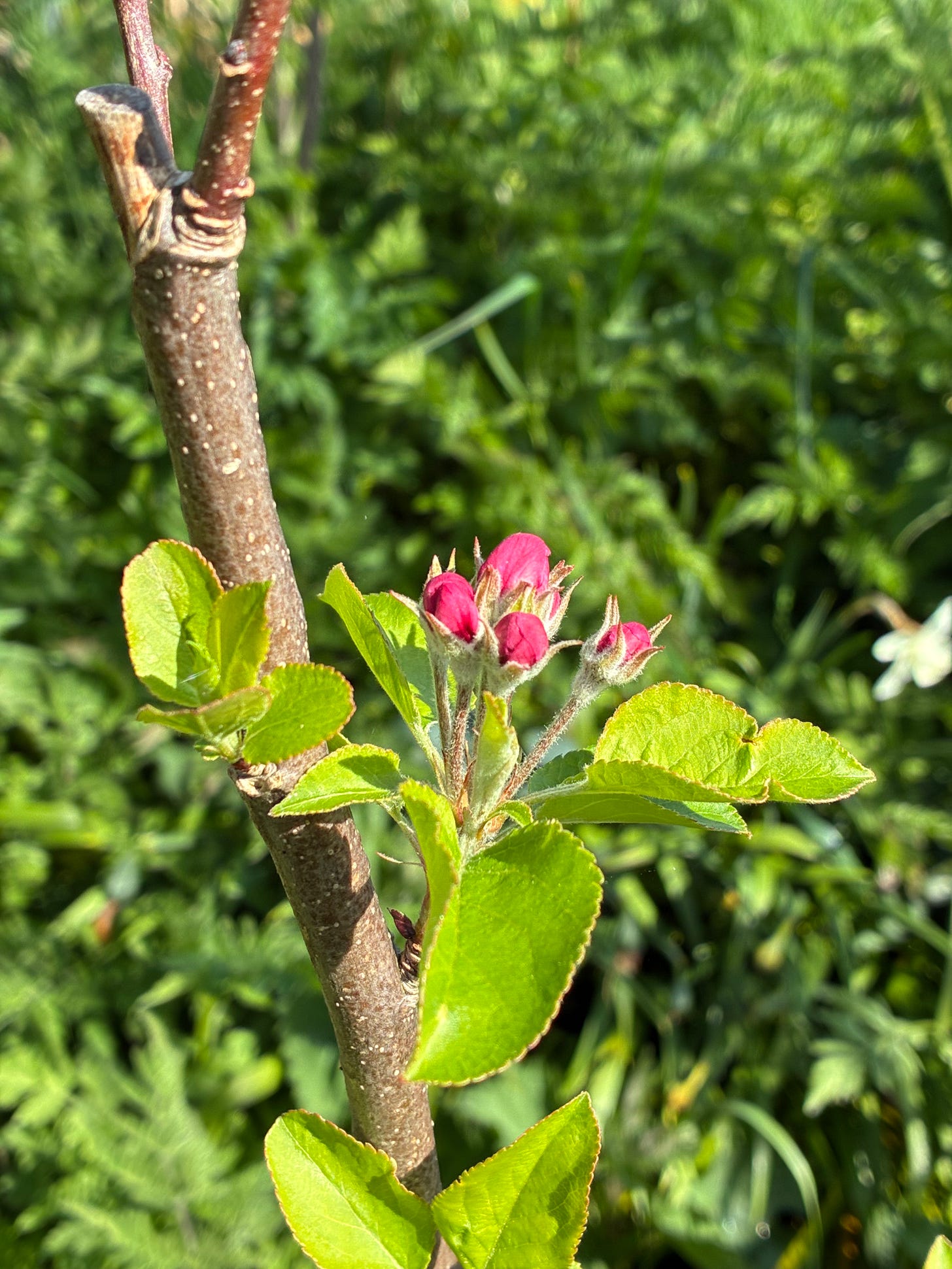How I apply forest gardening principles on my allotment...
...and how you can do the same even in the smallest of spaces
When I first got my allotment two and half years ago and went to take a look around, my heart sunk. Not only was the space completely overgrown with tough couch grass and brambles, there was a giant yew tree casting shade over the plot.
The term ‘Forest Gardening’ was first coined by Robert Hart who wrote a book by that name in 1991 based on his experience of creating a food forest on his small farm in Shropshire. He explained how our ancestors - and indigenous people around the world - created forest gardens, growing edible trees, shrubs, perennial and annual plants in a way that is harmonious with one another and with the natural world. It is a slower, more considered and less wasteful way of growing making used of tiers such as you would find in a forest. The canopy, the under-canopy and groundcover.
The first summer on my plot there was a long heatwave and a drought here in the southeast of England. While many plants wilted and died, I noticed that the runner beans I had planted beneath the yew tree thrived. They received enough sun early in the day to help them grow and I watered them every other day or so using a watering can rather than a hosepipe. But in the heat of the day it was the thick, evergreen yew that protected them with its cool shade. That was when I started to see the benefits of gardening in a situation resembling a forest clearing.
The old yew has other benefits. In the tangle of ivy growing up her trunk, I hide my large gardening fork to save me carrying it back and forth each time I visit the allotment. These also make a handy rack for bamboo canes when they are not in use.
She is not the only tree on the allotment. I also inherited a pear currently covered in a profusion of white blossom, boding well for this year’s harvest. Last year I only got a handful of fruit, while the year before was a bumper year but some rotter swiped the lot just before I was about to pick them. Robert Hart saw forest gardening as a communal experience, so perhaps I should view it in this light and be glad someone got to enjoy them.


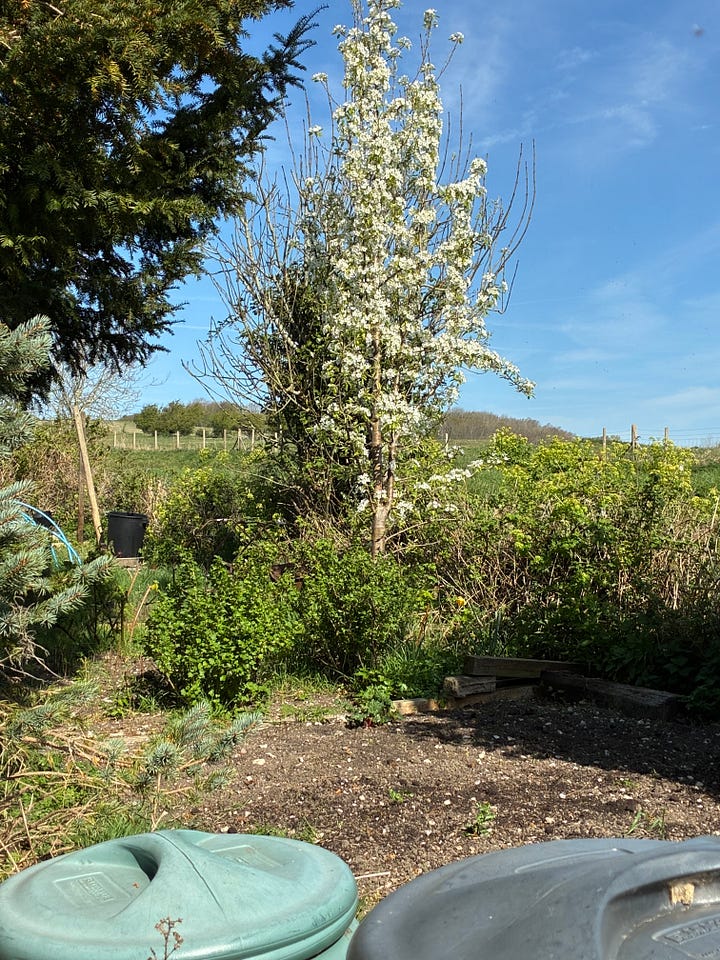
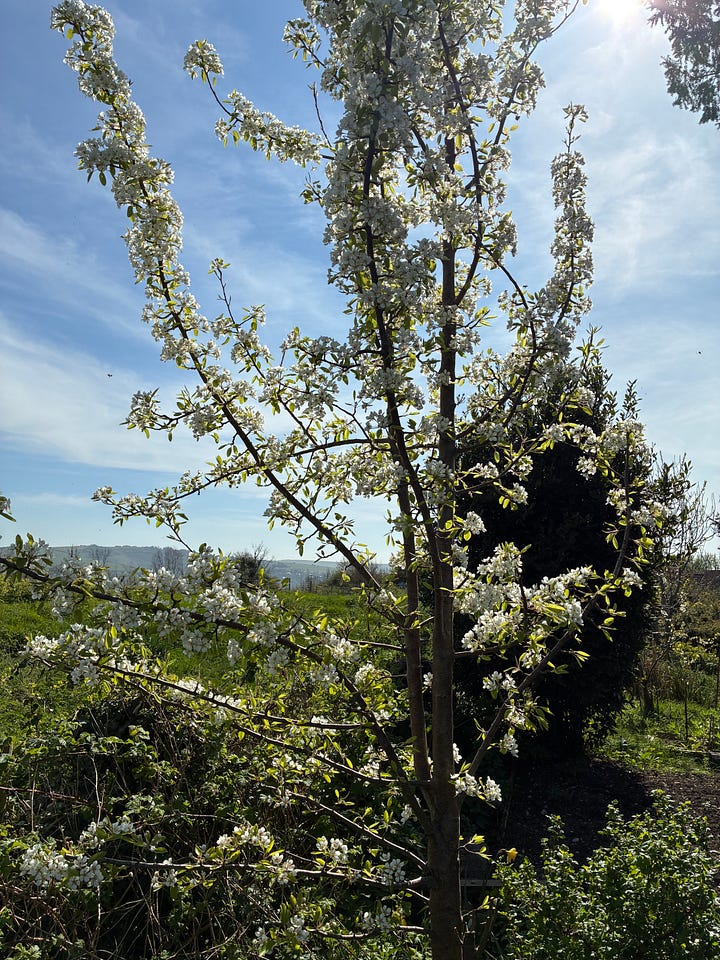
There is also a cherry tree, although I have yet to see fruit on it, and two young apples that I planted - Red Falstaff and Greensleeves. Now in their second year, they have a good amount of pink blossom, so I am hoping for apples this summer.
Other permanent fruit include lots of raspberry canes, two healthy gooseberry bushes and a redcurrant. I have a couple of blackcurrants dug up from a neighbour’s garden that I need to plant before the end of April. There are a couple of rhubarb plants to which I have added three more crowns this year, although in the recent dry weather they have yet to put on growth. All around the allotment are brambles that produce plump blackberries by the end of summer, although I have to keep them in check.
Forest gardens are an opportunity to rediscover edible plants that we have forgotten about. Around the roots of the trees and hedgerow are copious nettles and I make sure to leave patches of these both for wildlife that love them and to make tea, soup and salad from the young green leaves. At this time of year, there are crowds of the tall, lime green alexanders (Smyrnium olustratum) brought over by the Romans as a pot herb. Every part of the plant can be eaten, chopped up and added to omlettes or blended to make soup. But you must be absolutely sure that what you are eating is alexanders as they look similar to other poisonous umbellifers, including deadly hemlock.
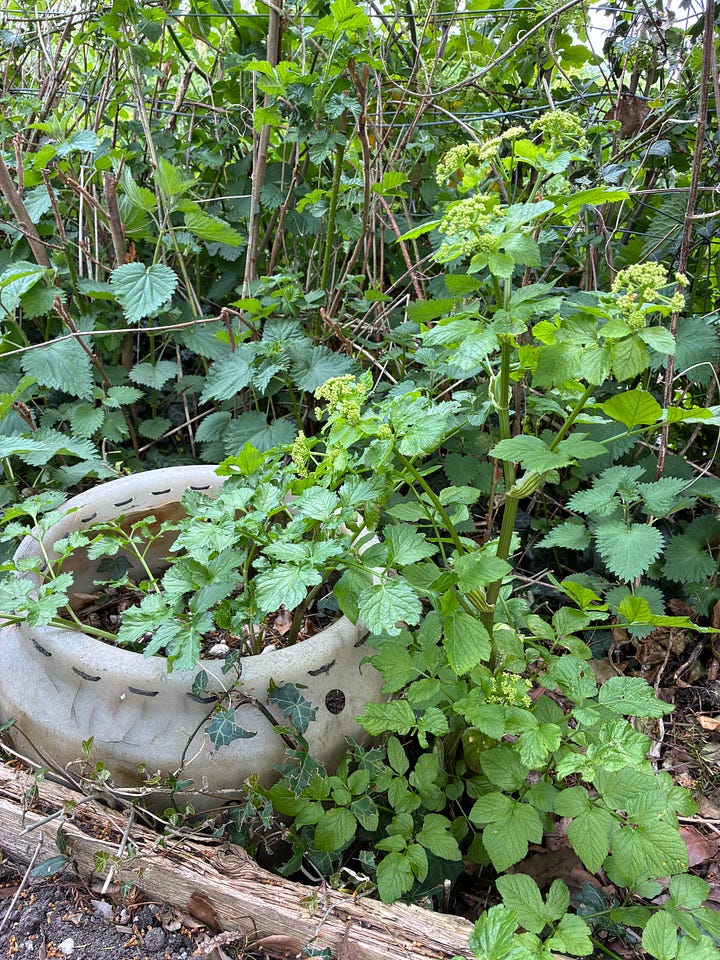
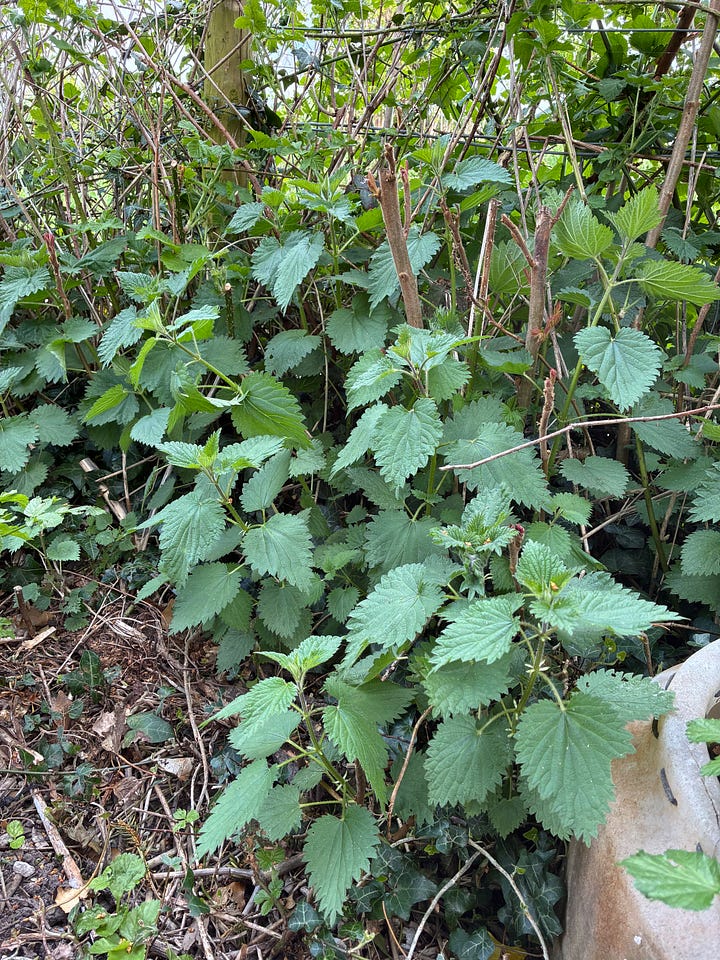
I also grow annual vegetables such as potatoes, beans, peas, squash and brassicas, sown as seeds undercover in our lean to then planted out once the risk of frost has passed. I have just planted out a heritage pea variety ‘Newick’, named after a village near to us in Sussex. In my mini-greenhouse I also have a heritage French bean called ‘Caseknife’ ready to go out in a few weeks’ time. These both come from the Heritage Seed Library run by Garden Organic. Members get to choose up to six seeds that are not available on the open market. Other varieties I am trying this year include Leek ‘Conora’ and bottle gourd or ‘dudi’ which is one of the oldest crops in human cultivation, dating back 14,000 years.
There is also a small herb bed with rosemary, oregano, thyme and chives, as well as gaps in between to sow cut and come again salad leaves. Last year I dismantled a broken picnic bench left by the previous tenants and used it to make a hügelkultur mound where I planted broad beans in the autumn, now in flower next to a luminous red-veined sorrel that appears to be perennial.

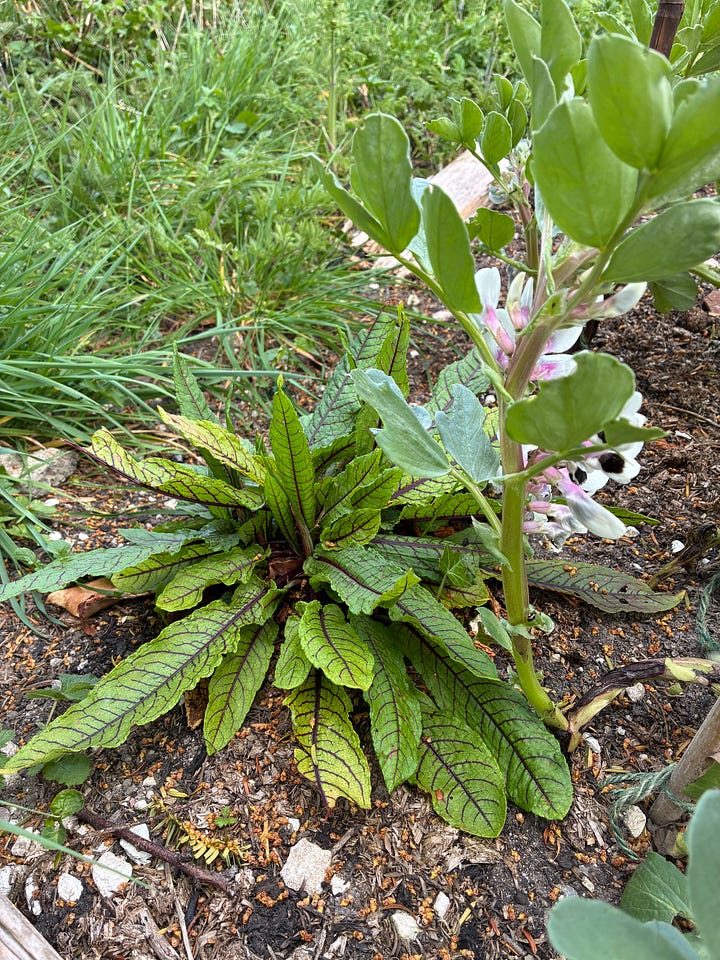
If you don’t have an allotment under a grand old yew, never fear. Plants want to grow and with a little care and attention, you can try most of these varieties in containers on a patio or balcony. Try placing larger fruit bushes next to smaller pots of herbs or greens. The great thing about containers is that if you have a hot, dry spell, you can move them into the shade.
Choose unusual or heritage varieties you won’t find in the supermarket, and add fruit, flowers, leaves and roots to dishes to provide homegrown fibre that will benefit your gut as well as giving you a great sense of achievement.





